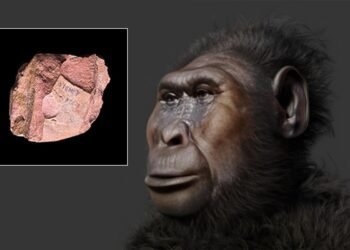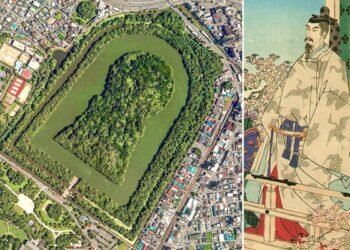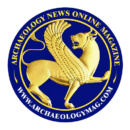Archaeologists have made new discoveries regarding the use of fire during the Ice Age thanks to the discovery and extensive analysis of three prehistoric hearths at Korman’ 9, which is an open-air prehistoric site in the Middle Dniester Valley of Ukraine. The study, led by the University of Algarve and the University of Vienna, provides rare and high-resolution evidence of how Upper Paleolithic humans used fire during the Last Glacial Maximum (LGM), a time of extreme cold and resource scarcity from 26,500 to 19,000 years ago.

Fire has long been known to be central to human life—used not just for warmth, but for cooking, tool-making, and social interaction. Well-preserved hearths from the LGM are surprisingly uncommon, so the finds at Korman’ 9 are particularly valuable. Using advanced geoarchaeological techniques, including micromorphology, colorimetric analysis, and 3D modeling, the researchers identified three flat, open hearths at the site.
These features, called combustion features (CFs), showed evidence of wood burning, high-temperature exposure, and complex post-depositional processes such as cryoturbation and bioturbation, which distort archaeological evidence.

“Fire was not just about keeping warm; it was also essential for cooking, making tools, and for social gatherings,” said Philip R. Nigst, one of the lead authors and an archaeologist at the University of Vienna. Despite the harsh glacial conditions, the inhabitants of Korman’ 9 had excellent control over pyrotechnology. The hearths reached temperatures of over 600°C, as determined by innovative substrate color analysis, indicating not just good control over fire but also an advanced understanding of fuel sources and combustion.

Charcoal analysis confirmed the burning of spruce wood, but partially carbonized bone remains suggest that bones and possibly animal fat may have supplemented wood as a fuel source. Marjolein D. Bosch, a zooarchaeologist at the University of Vienna, the Austrian Academy of Sciences, and the Natural History Museum Vienna, noted, “Some of the animal bones found at the site were burnt in a fire with a temperature of over 650 degrees Celsius. We are currently investigating whether they were used as fuel or just accidentally burned.”
Notably, the three hearths also varied in terms of size and structure, with one larger and more thermally intense than the others. This variation may reflect different uses of fire, possibly according to seasonal needs or social functions, and implies multiple site occupations. “People perfectly controlled the fire and knew how to use it in different ways, depending on the purpose of the fire,” Nigst explained, adding that the hunter-gatherers likely returned to the site at different times of the year.
























Comments 0